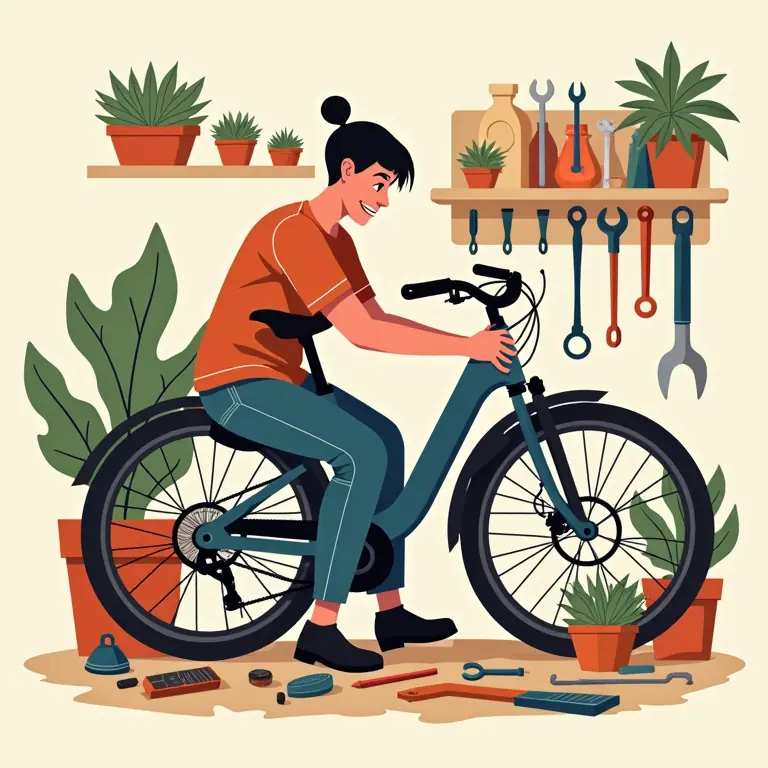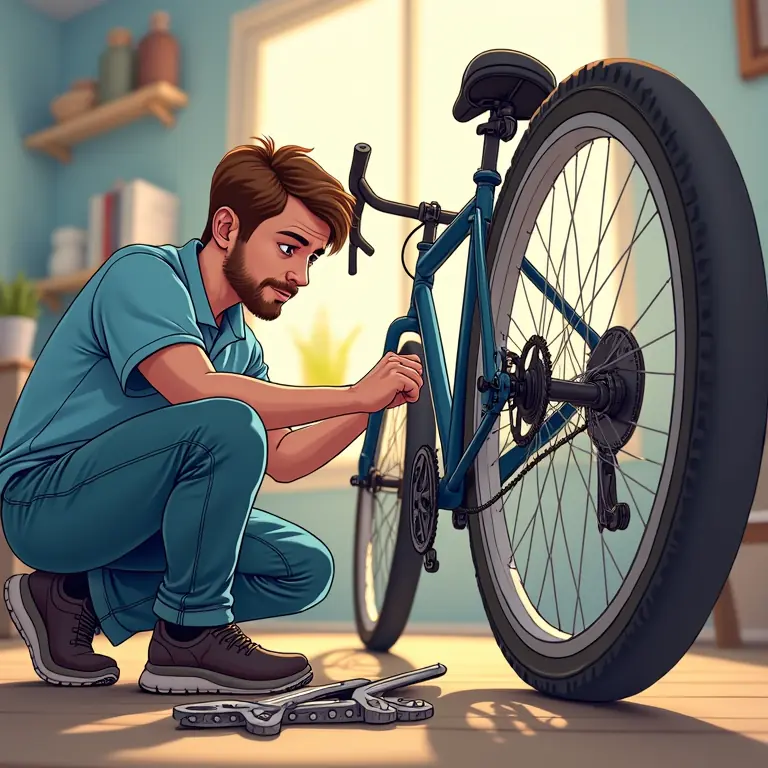Tune Up Your Ride: A Friendly Guide to Basic Bicycle Maintenance
So, you love your bike! That’s fantastic. Whether it’s a trusty steed for commuting, a weekend warrior for hitting the trails, or a leisurely cruiser for enjoying the scenery, your bicycle deserves a little love and attention. Regular maintenance isn’t just about keeping things running smoothly; it’s about ensuring your safety, extending the life of your bike, and saving you money in the long run by preventing costly repairs. This guide is designed to walk you through the basics, in a friendly and approachable way. No mechanic degree required!
Why Bother with Bike Maintenance?
Let’s face it, bike maintenance can seem daunting. But think of it like this: you wouldn’t drive a car for years without an oil change, right? The same principle applies to your bike. Here’s a breakdown of why it matters:
- Safety First: Properly maintained brakes, tires, and a secure frame are crucial for your safety on the road or trail.
- Performance Boost: A clean, lubricated bike simply performs better. Shifting is smoother, pedaling is more efficient, and you’ll enjoy a more comfortable ride.
- Cost Savings: Small issues, if left unattended, can snowball into major (and expensive) repairs. Regular maintenance catches problems early.
- Bike Longevity: Taking care of your bike means it will last longer, giving you years of enjoyment.
Tools of the Trade: What You’ll Need
You don’t need a fully equipped workshop to perform basic bike maintenance. Here’s a list of essential tools to get you started:
- Bike Pump: A floor pump with a gauge is ideal for inflating tires accurately.
- Multi-Tool: A compact multi-tool with Allen wrenches, screwdrivers, and a chain tool is a lifesaver on the go.
- Wrench Set: A set of open-end wrenches to fit your bike’s nuts and bolts.
- Chain Lube: Essential for keeping your chain running smoothly and preventing rust.
- Degreaser: To clean your chain and drivetrain.
- Cleaning Brushes: Various brushes for cleaning the frame, gears, and chain.
- Rag/Cloth: For wiping down components and applying lube.
- Tire Levers: For removing tires from the rims.
- Patch Kit or Spare Tube: For fixing flats.
- Cable Cutters: (Optional, but helpful) For trimming brake and derailleur cables.
- Bike Stand: (Optional, but highly recommended) Makes maintenance much easier.
Let’s Get Started: Basic Maintenance Tasks
1. Tire Inflation & Inspection
Your tires are your direct connection to the road. Maintaining proper inflation is critical for a comfortable ride and preventing pinch flats.

- Check the Sidewall: Locate the recommended pressure range (PSI) printed on the sidewall of your tire.
- Inflate: Use your bike pump to inflate the tires to the recommended pressure.
- Inspect for Wear & Tear: Look for cuts, bulges, or excessive wear. Replace tires if necessary.
- Check Tread: Ensure sufficient tread remains, especially for off-road riding.
2. Chain Cleaning & Lubrication
A clean and lubricated chain is essential for smooth shifting and efficient pedaling. A dirty chain wears out faster and can damage your drivetrain.
- Clean: Apply degreaser to the chain and use a brush to scrub away dirt and grime. Wipe clean with a rag.
- Lubricate: Apply chain lube sparingly to the rollers of the chain. Wipe off any excess lube to prevent attracting dirt.
- Frequency: Clean and lube your chain every 100-200 miles, or more often if riding in wet or dirty conditions.
3. Brake Inspection & Adjustment
Your brakes are arguably the most important safety component on your bike. Regularly inspect and adjust them to ensure they are functioning properly.
- Inspect Brake Pads: Check the thickness of the brake pads. Replace them if they are worn down to the wear indicators.
- Inspect Brake Cables & Housing: Look for fraying cables or cracked housing. Replace if necessary.
- Check Brake Lever Function: Ensure the brake levers feel firm and responsive.
- Adjust Brake Calipers: Adjust the calipers so that the brake pads are properly aligned with the rim or rotor.
4. Shifting Adjustment
Smooth shifting is a hallmark of a well-maintained bike. If your gears are skipping or not shifting properly, adjustments may be needed.

- Inspect Cables & Housing: Check for fraying cables or cracked housing.
- Adjust Derailleur Limit Screws: Limit screws prevent the chain from falling off the cassette or chainrings.
- Adjust Cable Tension: Fine-tune cable tension to ensure precise shifting.
- Check Derailleur Alignment: Ensure the derailleur hanger is straight. A bent hanger can cause shifting problems.
5. Bolt Check
Over time, bolts can loosen due to vibrations and use. Regularly check and tighten all bolts on your bike.
- Important Bolts: Pay particular attention to bolts on the stem, handlebars, seatpost, and brakes.
- Torque Wrench: Using a torque wrench ensures bolts are tightened to the correct specification. (Highly recommended, but not essential for beginners.)
6. Wheel Trueness Check
A true wheel rolls smoothly and efficiently. If a wheel is out of true, it can cause vibrations and affect your ride.
- Spin the Wheel: Spin the wheel and observe whether it wobbles side to side or up and down.
- Adjust Spokes: Adjusting the spoke tension can correct wheel trueness. (This is a more advanced task; consider taking your wheel to a bike shop if you’re not comfortable doing it yourself.)
Beyond the Basics: More Advanced Maintenance
Once you’ve mastered the basics, you can explore more advanced maintenance tasks. These may require more specialized tools and knowledge:
- Bottom Bracket Service: Replacing or servicing the bottom bracket.
- Headset Adjustment: Adjusting the headset to eliminate play and ensure smooth steering.
- Overhaul of Hubs: Disassembling, cleaning, and re-greasing hubs.
- Internal Cable Routing: Replacing cables and housing that are routed internally through the frame.
Resources & Learning More
There are tons of great resources available to help you learn more about bike maintenance:
- Park Tool: Park Tool offers a wealth of information, including repair guides and videos.
- YouTube: Search for “bike maintenance” on YouTube for countless tutorials.
- Local Bike Shop: Your local bike shop is a great resource for advice, tools, and service.
- Online Forums: Connect with other cyclists and share knowledge on online forums.
Don’t Be Afraid to Ask for Help!
Bike maintenance can seem intimidating at first, but don’t be afraid to ask for help. Your local bike shop is always happy to assist. And remember, even small amounts of regular maintenance can make a big difference in the performance and longevity of your bike.
Want to explore other creative hobbies? Check out this guide to food styling, or maybe learn to repair your denim. If you’re feeling artistic, calligraphy might be right up your alley!


Discussion about this post